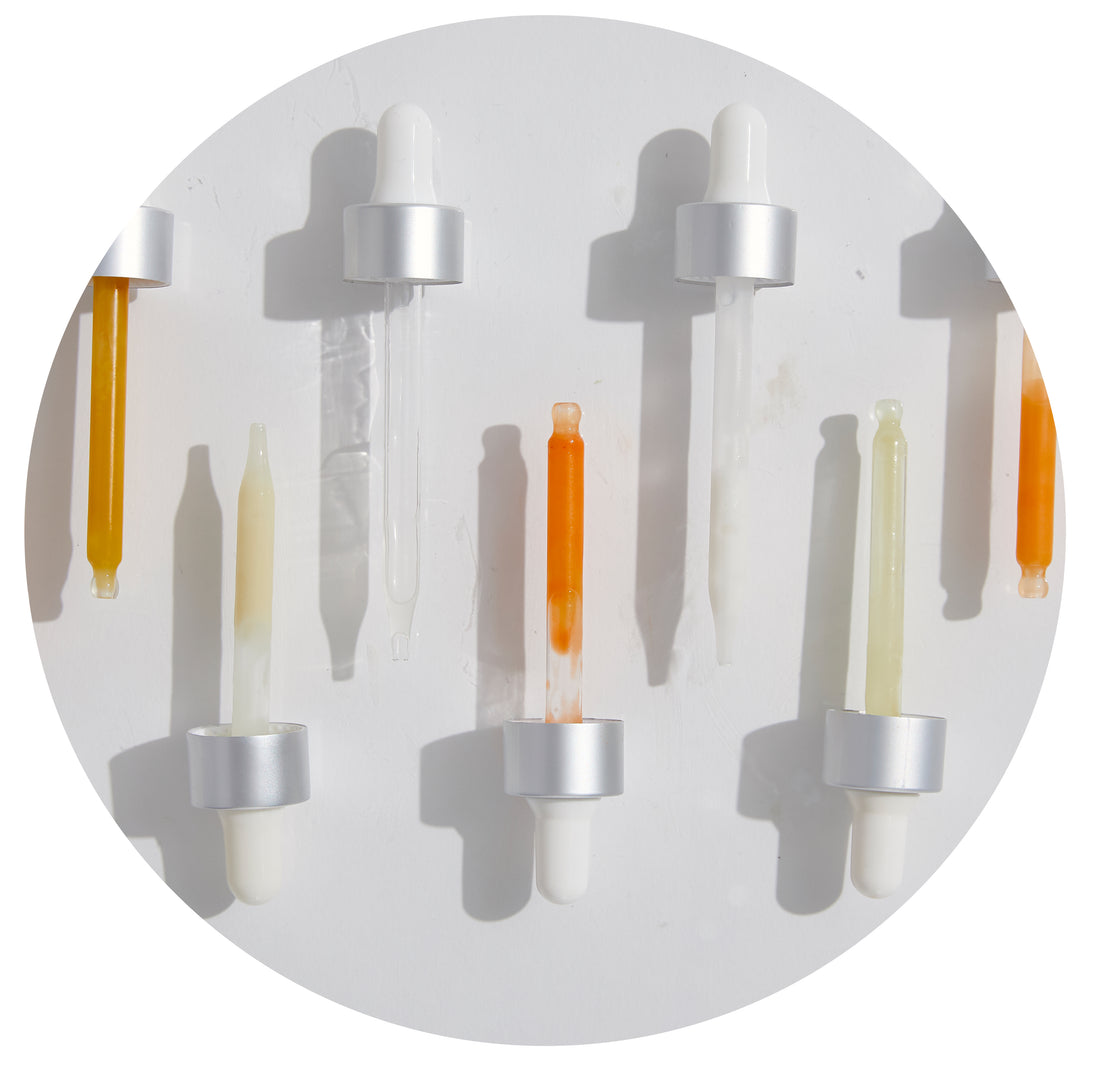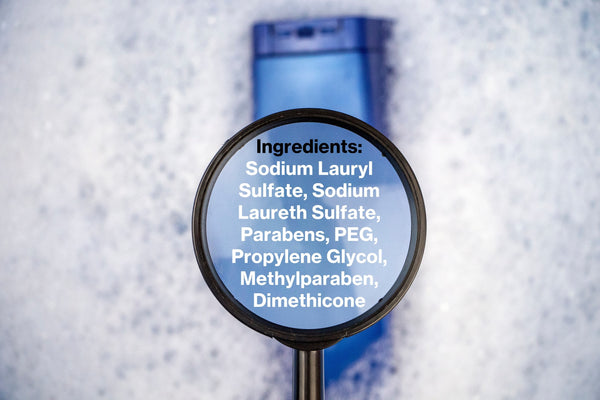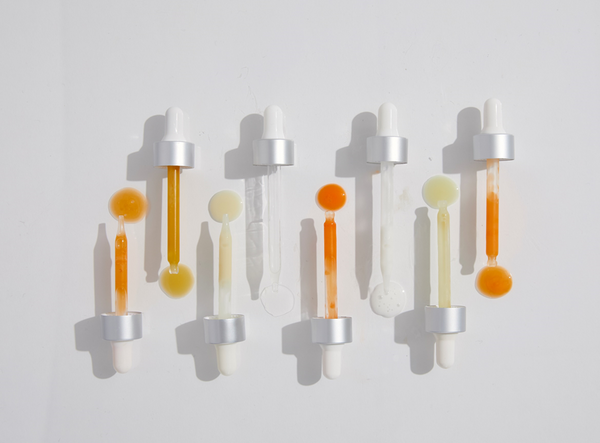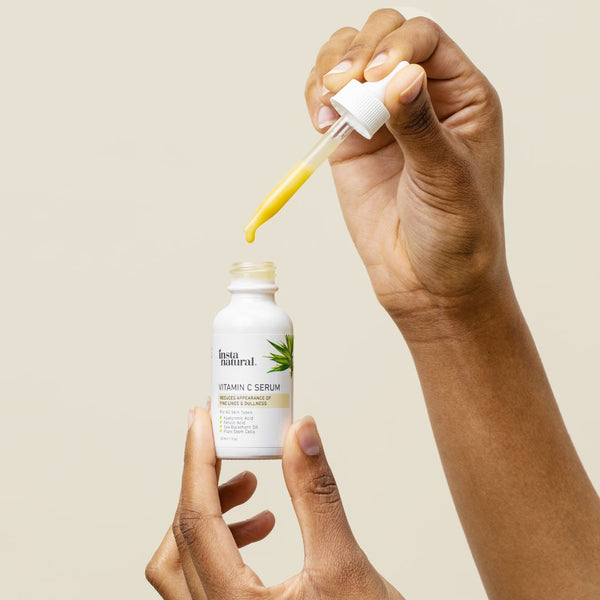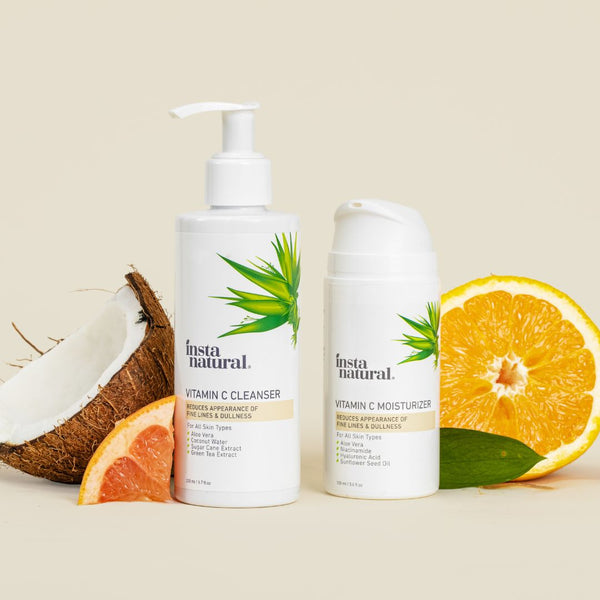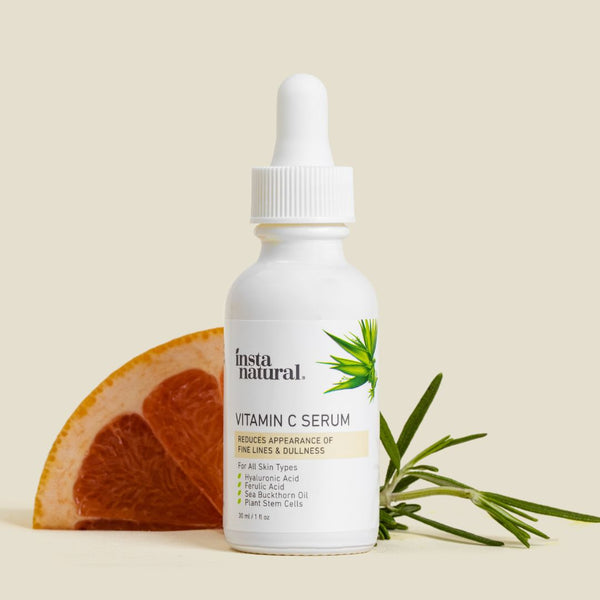Heather is a Licensed Esthetician and Director of Brand Development at InstaNatural
Navigating the world of skin care can be confusing due to the number of products, tools and techniques that are available. When you add in the element of understanding ingredients, it can be downright overwhelming.
At InstaNatural, we believe in the power of natural and safe skin care products and we aim to educate and empower our customers throughout their journey. We hope that this list of ingredients to avoid in your skin care provides you with the information to feel confident in your skin care decisions. Whether you’re a novice just getting started or a seasoned veteran looking to expand your knowledge, we've broken down six major ingredient categories into a two part educational series!
Sulfates – SLES/SLES
Sodium Lauryl Sulfate (SLS) and Sodium Laureth Sulfate (SLES) are surfactants that are commonly found in conventional cleansers, shampoos or bubble baths. They became a popular choice because they provide a high level of lather in cleansing products, which many people correlate to a feeling of “clean”.
However, both ingredients can be stripping to the skin and hair, causing irritation or dermatitis – especially on sensitive skin types. Additionally, due to the process of ethoxylation, SLES has a potential for contamination with 1,4 dioxane which has many health concerns. While they do create a desirable lathering effect, we believe that their potential risks outweigh their benefits and we recommend avoiding products that include these ingredients.
Products to Check: Face Wash, Body Wash, Bubble Bath, Shampoo
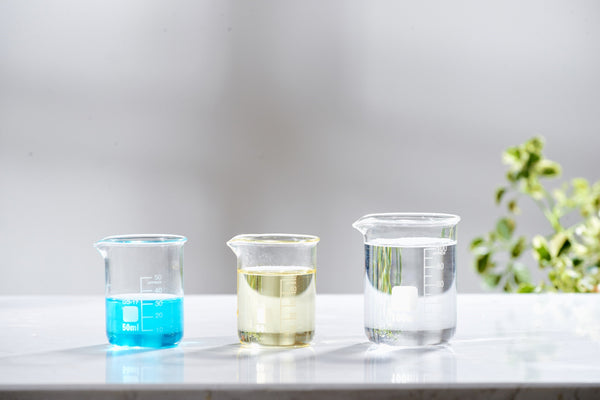
Mineral Oil, Petroleum and Silicone
Many conventional moisturizers or lotions (and even some that claim to be natural) use mineral oil, petroleum or silicones in their formula. These ingredients offer a nice “slip” to the product, allowing for a silky application or are included to create an occlusive barrier to “protect” the skin or provide a primer effect. However, they provide no real benefit to the skin.
Mineral Oil is derived from petroleum and is used as a moisturizer or to create a barrier on the skin. Commonly found in baby products, rather than absorbing into the skin mineral oil sits on the surface and creates a barrier which, in theory, is beneficial for sensitive skin or conditions such as eczema. However, while the ingredient does a good job at protecting the skin, it doesn’t soothe, reduce or prevent sensitive skin conditions and long-term use may cause dryness because the barrier prevents skin from being able to pull water from the air for hydration. Mineral Oil also has the potential to be an immune system irritant with overall toxicity concerns.
Petroleum functions the same way as mineral oil, but it is more occlusive than mineral oil, creating an even thicker barrier on the skin. In addition to the negative skin benefits, petroleum also has a concern of being contaminated by potentially cancer-causing PAHs. Unlike Europe, the US FDA has no set requirements on the refining process or PAH levels in personal care products.
Silicones also function in the same way as mineral oil and are often used in skin care and makeup because they create an instant “blurring” effect on the skin – lessening the look of lines, wrinkles and pores while giving products a silky feeling. There are many different types of silicones, and some can be derived from petroleum and may carry similar health concerns due to the method of processing. Despite the type of silicone, they can cause breakouts and blackheads because they don’t absorb but rather sit on the surface of the skin, trapping oil, dirt and debris. Many silicone-containing products are designed to be mattifying, which over time can cause your skin to over produce oil because it causes the skin to lose its natural sebaceous balance.
Products to Check: Moisturizers, Lotions, Eczema Creams, Baby Products, Foundation, Primers
Polyethylene Glycol (PEGS)
Polyethylene Glycol (often seen listed as “PEG”) are ingredients used in products to stabilize emulsions or to help increase the efficacy of other ingredients due to its ability to enhance the absorption of other ingredients. PEGs are petroleum-derived ingredients that are often contaminated with high levels of ethylene oxide and 1,4 dioxane. The World Health Organization, International Agency for Cancer Research has classified Ethylene Oxide as a known human carcinogen and 1,4 dioxane as a possible human carcinogen.
Furthermore, while PEGs carry their own health concerns, because they are penetration enhancers, they can drive other unhealthy ingredients further into the skin – potentially causing more damage or skin care issues.
PEGs are not only used in conventional products but may also be found in products that claim to be natural – so it is important to read ingredient labels before making a purchasing decision. You may see an ingredient that begins with “PEG-“ and then lists something that sounds natural, such as “PEG-16 Macadamia Glycerides”, which means the ingredient started from a natural source but is still a polyethylene glycol derivative. It’s important to remember that while an ingredient may have a natural source, it does not always mean it is safe.
Products to Check: Moisturizers, Lotions, Cleansers, Shampoos, Conditioners
Where to Start?
A question that you may be asking yourself is – but does this really matter in my skin care? And we believe the answer is yes. While some of these undesirable ingredients or contaminants may be present at low levels in a single product, what is often not considered is how many products we use every single day. We are exposed to hundreds of chemicals every day – many of which we cannot control (such as pollutants). However, we can control what we put into, onto and around our bodies – and personal care products are a huge piece of that.
Data is lacking about the compound effects of using these unhealthy ingredients at low levels, combined, and over long-term use. Therefore, our decisions must be based on the data available and while it isn’t always directly correlated to use in cosmetics, it’s enough to make you reconsider the price of beauty.
Still unsure how to get started? Don’t think you have to replace everything you use immediately. It takes time, money and trial and error to find new products to love. Instead, focus on replacing items as you run out, and if you want to replace items sooner – replace the items you use most often (like your daily facial cleanser) versus items you only use occasionally.
How We Do Things
At InstaNatural, we make continual efforts to ensure the products we create are safe and effective, utilizing as many natural and naturally derived ingredients as possible, and always staying up to date as new data becomes available.
We swap sulfates for coconut-derived cleansers such as Decyl Glucoside or Lauryl Glucoside.
We leverage natural butters and oils instead of petroleum derivatives or PEGs.
As the industry continues to advance, we are committed to advance our developments as well. This is why you can trust InstaNatural to offer products that ensure your health is never compromised, while providing results. You can learn more about our formulation standards by checking out InstaNatural's Core Clean Promise.
Interested in learning more? Click here to read Part 2 of Ingredients to Avoid in Skin Care. We understand that the information available can be daunting – and we hope this series and the products we create help you along your journey.
